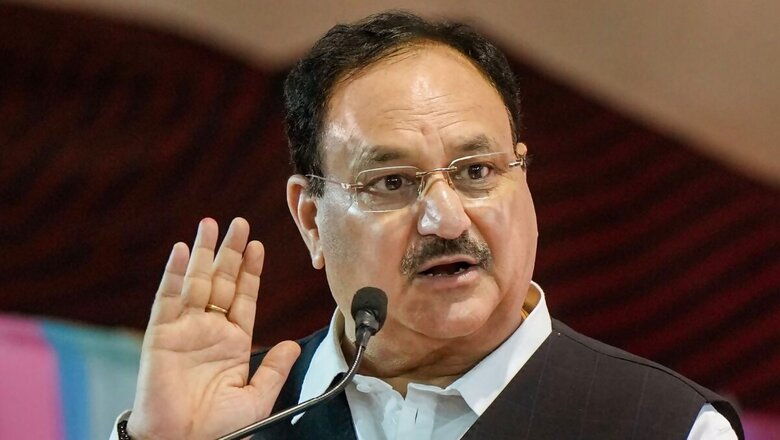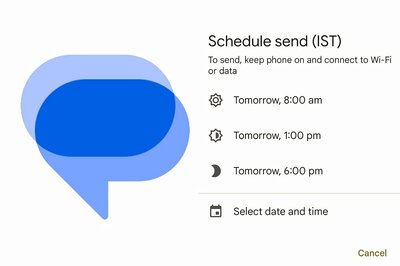
views
JP Nadda has returned as the health minister in the Modi 3.0 Cabinet, nearly five years after stepping down to become the Bharatiya Janata Party (BJP) president. He will also hold the additional portfolio of chemicals and fertilisers, which also looks after the Department of Pharmaceuticals (DoP).
Nadda served as health minister from 2014 to 2019 during Prime Minister Narendra Modi’s first term. He is credited with slashing the prices of coronary stents by 85 per cent in a landmark move in 2017. Under his leadership, the National Health Policy 2017 was also launched, bringing the approach of “preventive healthcare” for the first time.
However, in a post-COVID world, the Ministry of Health and Family Welfare, along with the Department of Pharmaceuticals, has identified several new focus areas.
These include reducing dependence on bulk drug imports from China, enhancing research and development on drugs and diagnostics within India, increasing surveillance of new pathogens, and improving mechanisms for reporting vaccine-related side effects.
The ministry is now focused on strengthening drug manufacturing practices in India through its regulatory arm, the Central Drugs Standard Control Organisation (CDSCO). Over the past year, it has made significant moves following multiple complaints over the quality of drug manufacturing in India.
Here are the top five challenges Nadda needs to focus on as he takes over the seat of Union health minister once again.
EXPANDING THE BASE OF AYUSHMAN BHARAT
The health insurance scheme, which was launched under Nadda, is awaiting a major boost to include senior citizens of more than 70 years in the beneficiary base, as promised by PM Narendra Modi in pre-election rallies. The scheme, Pradhan Mantri Jan Arogya Yojana (PM-JAY), also known as Ayushman Bharat, was launched in September 2018. It provides an annual health cover of Rs 5 lakh per family to more than 10.74 crore poor families — about 50 crore people. The scheme covers secondary and tertiary care hospitalisation.
However, an expert panel formed by the Centre is already working on bringing major changes to the scheme. “The scheme will not be able to take the load of increased beneficiaries in its current form. It is not viable enough to sustain more burden as per the feasibility study,” said an official from the health ministry. The scheme also suffers from the lack of participation of private hospitals.
The report of the expert committee is expected to come within the next ten days following which the government can offer more benefits.
NEET EXAM LEAK CONTROVERSY
The ongoing controversy over the National Eligibility cum Entrance Test (NEET) needs to be put to rest. The alleged irregularities and inflation of marks showed that 67 candidates shared the first rank in the exam. However, the National Testing Agency (NTA) has reiterated that there was no paper leak and integrity of the exam throughout the country was not compromised. However, such issues need thorough scrutiny.
“Currently, the NTA is investigating the matter on its own. However, such lapses should be investigated by an independent inquiry,” said a senior officer at the National Board of Examinations (NBE), the apex regulatory body for postgraduate medical education in India. “It’s important to restore the trust of medical students in the education system of the country.”
ALL AIIMS SHOULD BE MADE FULLY FUNCTIONAL
The number of AIIMS (All India Institute of Medical Sciences) has increased from seven to 22. The concept of expanding these institutions was initiated by the Modi government after coming to power in 2014.
In 2017, Nadda in a conference had said, “We are trying to develop not AIIMS-like institutions but AIIMS. We will not compromise the standards in the new AIIMS facilities.” However, none of these institutions are “fully functional” yet, as revealed by outgoing health minister Mansukh Mandaviya in a parliamentary reply.
CONTINUE PHARMA CLEANSING
From conducting raids on pharma units, abandoning production licenses, implementing Schedule M, and launching QR codes to monitoring the cough syrup market, the Ministry of Health along with CDSCO and the Department of Pharmaceuticals made important moves to upgrade the quality of drugs produced in India last year.
“India has long been recognized as the pharmacy of the world and this reputation is not only a national pride, but also a significant contributor to export revenue,” said an industry veteran, adding that “addressing the quality concerns will not only help solve problems in public health but also help to keep on track its target of reaching a size of $130 billion by 2030”.
MEETING ELIMINATION TARGET OF TUBERCULOSIS BY 2025
Going by what experts say, it is almost a “herculean task” to eliminate TB by 2025 – five years ahead of the global target as decided by PM Modi. As per India’s plan for 2017-2025, India should aim to report less than 44 new TB cases or 65 total cases per lakh population by 2025. The progress of the elimination needs close monitoring.




















Comments
0 comment